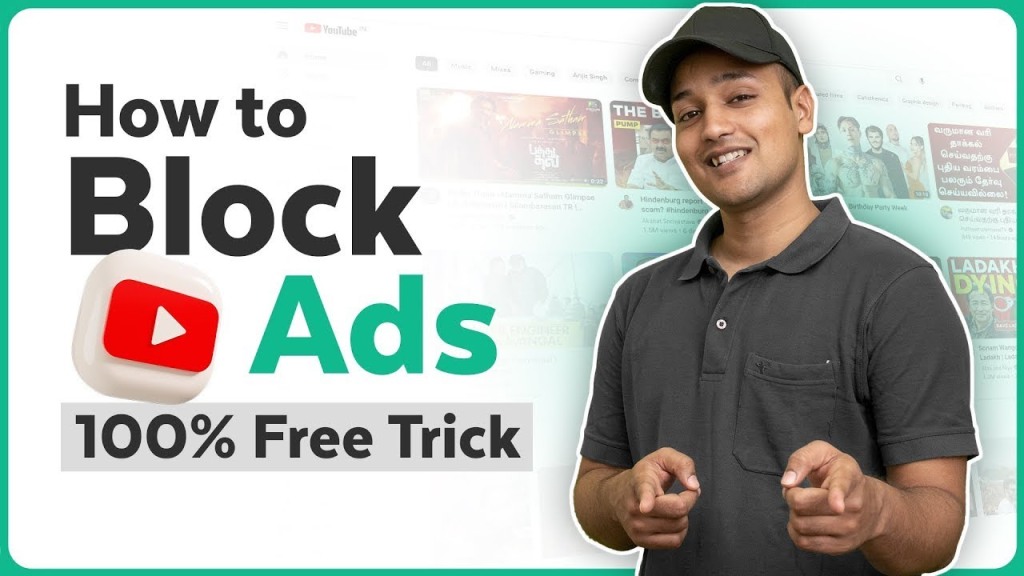
Like many of you, I find myself diving into the vast sea of content on YouTube, navigating through waves of video ads that sometimes feel like a barrage to my viewing pleasure. It’s a familiar experience for anyone tapping into social media’s rich stream of video marketing. As much as I understand that YouTube advertising forms the backbone of this free platform, I’m also on the lookout for strategies to minimize the interruption. If you’re in the same boat, aiming for smoother, ad-limited sailing, join me as we explore some effective techniques to enhance our YouTube experience.
Key Takeaways
- Understand that YouTube ads are an integral part of the platform’s revenue model.
- Learn methods to limit video ads and enjoy a more seamless viewing experience.
- Recognize the role of video marketing and how it affects both creators and viewers on social media.
- Explore options beyond ad interruptions to retain the joy of uninterrupted streaming.
- Realize the balance between supporting content creators and managing your own viewing preferences.
The Inevitability of YouTube Advertising and Its Impact
As a dedicated viewer, I’ve come to recognize the role of advertisements as the lifeblood of YouTube’s ecosystem. Though they may at times disrupt my binge-watching or learning endeavors, I understand their significance in sustaining the platform and empowering creators. Let’s delve into the complex tapestry that is YouTube’s advertising landscape.
Understanding the Advertising Ecosystem on YouTube
The YouTube ad strategy is a dynamic one, masterfully balancing the interests of creators, viewers, and marketers. As I explore various channels, it becomes evident that video marketing isn’t just about promoting a product, but about supporting a structure where creators can thrive. Engaging with YouTube marketing amplifies the reach of creators, securing financial rewards for their efforts and fueling the continuous flow of diverse and rich content for viewers like me.
Yielding Benefits for Creators and Distraction for Viewers
In the midst of my video voyages, I often encounter the dilemma of YouTube ad campaigns interrupting educational clips or immersive storytelling. Despite this, I acknowledge the mutual give-and-take: while ads might temporarily distract, they also guarantee that my favorite content producers receive their dues. In this digital era, video marketing is the thread that intertwines content creation with financial viability, ensuring the YouTube universe remains expansive and accessible for all of us.
Going Ad-Free with YouTube Premium
As someone who values uninterrupted streaming, I’ve found that investing in YouTube Premium is a game-changer for my viewing experience. For just $13.99 a month—or $7.99 for students like myself—I can enjoy videos without the nuisance of ads. I’m not just paying for the absence of ads; YouTube Premium sweetens the deal with features such as background play on my desktop, which means that I can continue listening to my favorite vlogs while drafting my essays.
It’s not just my desktop experience that’s been upgraded. With YouTube Premium, the benefits carry over to mobile and even TV apps, ensuring that whether I’m on-the-go or settled in for movie night, I’m covered. The ad-free experience extends to YouTube Kids as well, which my little cousins absolutely love when they come over. What I appreciate the most though, is the option to download content for offline viewing. This means that when Wi-Fi is an issue, my entertainment isn’t compromised, nor is my ability to continue learning from educational content.
And while I’m all for ad-free streaming, I also care about supporting the creators I follow. YouTube Premium addresses this by making sure that part of my subscription fee compensates creators, allowing me to ethically enjoy their content without interruptions. It’s a win-win in my book. However, I’ve noted that my ad-free status travels only as far as YouTube Premium is available. When I took a trip last summer, ads made a comeback, but a VPN with location spoofing could’ve been a workaround for continuous, seamless viewing.
YouTube’s solution for those who prioritize a smooth, ad-free experience, while maintaining support for creators, is quite compelling with YouTube Premium. It’s clear that when it comes to youtube ad targeting, sometimes the best approach is opting out completely—and YouTube Premium lets me do just that.
Patience Pays: Skippable Vs. Non-Skippable Ads
When I’m on YouTube, I often encounter a mix of skippable and non-skippable video ads. I’ve noticed that this part of youtube ad optimization is crucial to a channel’s success. It’s a balancing act between maintaining an effective youtube ad strategy and ensuring a pleasant viewing experience for me and others. Let’s look closer at how these ad types work and their implications.
Navigating Through Ad Durations
Most video ads on YouTube are designed to keep my attention just long enough before giving me the option to continue to my desired content. These ads are often less than 15 seconds, and I’ve observed that the skippable ones allow me to move on after just five seconds. But it’s not just about waiting to hit “Skip Ads”; it’s also about understanding the role these ads play in content creators’ livelihoods and the youtube ad strategy they follow.
How Skipping Ads Affects Content Creators
Every time I choose to skip an ad, I’m impacting a content creator’s revenue stream. YouTube ad optimization revolves around engaged-view metrics, and if I skip before 10 seconds, the creator might miss out on a full engagement credit. It’s a tough choice—an uninterrupted viewing experience versus supporting a creator’s channel. As someone who enjoys the vast landscape of content YouTube offers, I recognize the value of both sides in this equation.
Keyboard Shortcuts: Quick Fixes to YouTube Ads
As someone deeply entrenched in the realm of video marketing, I understand just how crucial it is to formulate an effective youtube ad strategy. Yet, as a viewer, I also get the need for an unobtrusive viewing experience. That’s where a neat little trick comes into play – keyboard shortcuts. During those pre-roll ads that seem to extend into eternity, I often use certain shortcuts to swiftly open the “About This Ad” dialogue.
By making a selection to “Stop seeing this ad,” I’ve taken immediate control over the promotional content entering my space. And just like that, the particular ad vanishes from my future viewing sessions. It’s not a blanket solution, though; ads from the same advertiser might still pop up. But it’s a start. Additionally, I opt for turning off ad personalization when I’m keen on maintaining a layer of privacy—after all, not being tracked online can add to my sense of digital peace.
Navigating the Evolution of Ad Blockers on YouTube
As a dedicated content enthusiast, I’ve seen firsthand the rapid evolution of ad blockers and their tug-of-war with platforms like YouTube. Google’s efforts to squash ad blockers on YouTube have made waves in the youtube marketing community, prompting many, including myself, to seek out alternative strategies for an uninterrupted video experience.
The Constant Battle Between Ad Blockers and YouTube
Once a simple add-on, ad blockers like uBlock Origin and Adblock Plus have become essential tools for viewers intent on dodging youtube advertising. Despite this, Google’s clampdown has made the use of ad blockers on YouTube more complex. I’ve noticed that, while some users are affected, others continue to enjoy video ads-free streaming, hinting at the continuous game of cat and mouse between tech-giants and ad-blocking developers.
Alternative Browsers: The Ad-Blocking Heroes?
The search for an uninterrupted viewing experience has led me down various paths, and I’ve discovered browsers like Brave, Opera, and Vivaldi. These platforms are the unsung heroes for many, with their built-in ad-blocking capabilities providing a haven from the pervasive youtube advertising. For those craving even more privacy and control, tactics like logging out of Google accounts, using incognito mode, or regularly clearing browser cookies can be effective ways to sidestep Google’s defenses against ad blockers, all in the quest for a smoother YouTube marketing landscape.
You’re Not Stuck: Exploring YouTube Clones
As a savvy social media user and a fervent advocate of video marketing, I’ve always been on the hunt for fresh platforms that enhance my viewing experience. Imagine my delight when I stumbled upon YouTube clones like SmartTubeNext, NewPipe, and SkyTube. These applications are a game-changer, especially for those of us using Android and Amazon Fire devices, as they offer an ad-free journey through the vast sea of online video content.
These third-party services are innovative in the way they allow us to sideload apps outside the jurisdiction of official app stores such as Google Play. This freedom is like a breath of fresh air in a world where control seems to tighten around us day by day. Yet, with great power comes great responsibility, and the use of YouTube clones is not without its risks. I still remember the shakeup in the video marketing community when YouTube Vanced was taken down by Google in 2022. The episode serves as a stark reminder that while exploring these alternatives can be liberating, one must tread carefully to navigate the complexities of legal ramifications.
Beyond just being an avid viewer, I see these platforms as vital tools for the future landscape of video marketing. As we dive deeper into the age dominated by social media, it’s essential to keep an eye on these YouTube clones, which present both challenges and opportunities for viewers and marketers alike. After all, innovation often occurs at the edge of comfort, and in this rapidly-evolving digital paradigm, who knows what new possibilities we might uncover?
Downloading YouTube Videos: The Offline Solution
I’ve always found that YouTube video download can be a savvy move for avid viewers who want an uninterrupted experience. Video marketing is thriving, and youtube marketing is part of our daily digital diet, but when we need a break from ads, downloading videos for offline watching is my go-to recommendation.
Preventing Ad Interruptions with Downloads
Imagine this: You’re in the middle of a gripping tutorial or an awe-inspiring travel vlog, and an ad pops up. By downloading YouTube videos beforehand, you can keep the flow going without a hitch. It’s a simple solution for those moments when you want pure, unadulterated content, without the interruptions of online streaming.
Legal Implications and Creator Revenue Considerations
But here’s the rub: when I opt for a YouTube video download for personal use, I’m mindful of the content creators I love. They rely on ad revenue, and my choice could impact their earnings. While it’s within the legal rights set by Google to download videos, it’s crucial to consider the ethical side of this practice. At the end of the day, supporting creators is just as important as enjoying their content on our terms.
Creators’ Choice: Turning Off Ads for User Experience
When I think about enhancing my audience’s enjoyment on YouTube, I often consider the option of delivering a YouTube ad-free experience. It’s a bold move, I know, but it’s one that can set me apart in a space saturated with advertisements. By heading into my YouTube Studio settings and deactivating ads, I have the potential to offer my viewers seamless streams, making their social media experience about the content, not the interruptions.
Of course, this approach to video marketing might seem counterintuitive concerning YouTube marketing norms. But there’s a certain appeal in choosing connection and creativity over revenue. It’s a strategy that appeals to viewers who are tired of being treated as mere targets for advertising and yearns for genuine engagement. In my journey to foster a loyal community on YouTube, prioritizing user experience could be my most impactful move yet.
Conclusion
As we navigate through the virtual streams of YouTube, it’s evident that ads are a persistent element woven into our viewing experience, integral to both the platform’s business model and content creators’ livelihoods. Yet, I understand that for many, the quest for uninterrupted viewing is paramount. My exploration of ad-free strategies has revealed robust options catering to individual preferences while acknowledging the varying impacts on those creating the content we enjoy. Whether it’s a commitment to YouTube Premium, harnessing the power of skippable video ads, delving into the realm of ad blockers or seeking refuge in alternative platforms and downloads, there’s a spectrum of solutions available.
Meanwhile, from the creators’ perspective, the choice to regulate the presence of YouTube ads on their channels is pivotal in sculpting the audience’s experience and manifesting their brand’s ethos. This autonomy invites a delicate dance between commercial interests and creative expression, often hinging on their specific youtube ad strategy and youtube marketing goals. As I ponder the vast landscape of YouTube and its ever-evolving video marketing strategies—encompassing youtube ad campaigns, youtube ad targeting, and youtube ad optimization—the common thread that emerges is a shared drive towards a smoother, more seamless streaming journey.
I’m left considering how YouTube’s fusion of social media dynamism and video advertising prowess maintains its reign in the digital age, with users and creators alike seeking that perfect harmony of accessibility and enjoyment. With YouTube operating as a testament to the powerful intersection of youtube advertising and ingenuity, the overarching endeavor persists—to ensure the platform’s oceans of content can be navigated gracefully, without the disruptive tidal waves of ads. Here’s to each of us finding our ideal current within YouTube’s vast and vibrant ecosystem.
Feel free to contact us with any questions!



Leave a Reply